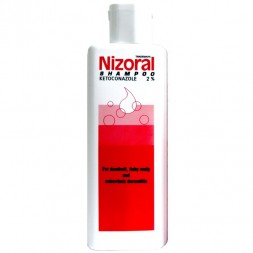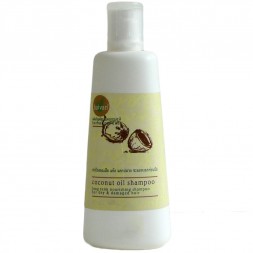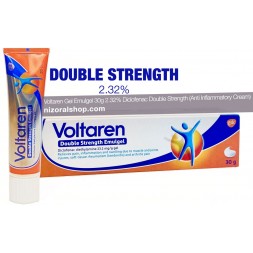Studies show that most women and men will get a fungal infection at some point in their life.
.jpg)
What's a yeast infection?
A Yeast Infection is actually a fungus that successfully bypassed the immune system and started growing and infecting the area it lived on. It can happen anywhere on the body.
As amazing as it sounds, the body carries tons of fungi that are regulated by the immune system. When it is weak, the immune system can’t tell the difference between good and bad fungi. As a result, bad fungi grow faster and take over good fungi that were supposed to protect the body from getting infections.
The reason why it is called yeast is because it comes from a mix of Old Englist gyst, and Indo-European root, meaning “bubble”. As a matter of fact, yeast organisms grown in laboratory look like bubbles or mushrooms popping out. In the medical field, it is commonly referred as Candida infection.
Types of Yeast
The most common type of yeast is Candida Albicans, which is a thrush infection affecting the vaginal areas and its surroundings. Over 85% of patients diagnosed with a yeast infection suffer from Candida Albicans. There are many different types of yeast. Here is a comprehensive list:
C. ascalaphidarum: Yeast produced by “Dragon-Fly” insects.
C. dubliniensis: Fungal infection mostly found in oral cavities from HIV-positive, chemotherapy, organ transplant, and diabetes patients.
C. glabrata: Another vaginal thrush infection targeting elderly and HIV-positive people.
C. guilliermondii: Infection linked to low clinical results and prevalent among cancer patients.
C. kefyr: Yeast infecting urinary tract and bloodstream in people with low immune system such as patients in intensive care.
C. keroseneae: A new type of fungal infection found in aviation fuel in 2011. That’s why it has been named as such, kerosene being the fuel used for airplanes.
C. krusei: Yeast found in chocolate production made from cacao beans, as they need to be fermented (chemical breakdown of cacao by yeast and other microorganisms) to suppress bitter taste and help the beans to decompose. It is present in people with low count of neutrophils, a type of white blood cells fighting infections.
C. lusitaniae: Yeast infection identified in bone marrow transplantation and chemotherapy patients.
C. parapsilosis: Fungal infection that can cause inflammation of the whole body in people suffering from low immune system and/or having surgery of the gastrointestinal tract, low organ function as well as poor blood flow.
Symptoms of Yeast Infection
Fungal Infection signs depend on the affected area and the type of fungus. For skin yeast infections, most common symptoms are:
- - Inflammation
- - Red rashes
- - Itchiness
- - Pain
- - Burning
- - Flaky skin
- - Dandruff
If the yeast is related to a vaginal thrush infection, signs should look like:
- - White thick discharge
- - Itching
- - Stinging
- - Redness
- - Pain
Oral fungal infection also known as oral thrush:
- - White plaques on red base on the tongue (look like milk stains) or anywhere in the mouth.
- - Pain
- - Redness
Symptoms of Bloodstream or organ yeast infections are diverse, but could characterized as:
- - Fever
- - High body temperature
- - Fatigue
- - Low or High Blood pressure
- - Urinary infections
How To Treat Yeast Infection?
As mentioned, fungi are microorganisms that live in the body. The immune system auto regulates them unless you have a weak immune system. In other words, the main remedy to treating a yeast infection is having a strong immune system. Immune system strengthening can be achieved by having a balanced and healthy diet, loaded in B vitamins and minerals to help energy production. Green vegetables, nuts, whole grains and fish are also ingredients that can improve immune system defense.
A Yeast Infection home remedy consists in applying tea tree essential oil on to the affected area, as the substance acts as an antifungal solution that lower stinging and can kill the fungus. Other natural fungal infection treatments suggest the use of vinegar or lemon on the affected area, as both ingredients are known for relieving itchiness and their anti-fungal natural properties.
Not all yeast infections can be treated with natural solutions and/or healthy diets. Healthcare professionals often recommend the use of topical or oral antifungal treatments. Those drugs have one main active ingredient in common, which is ketoconazole. Ketoconazole is a formulation used to divide the yeast infection and kill the fungus. The ingredient can be found as tablets for oral administration, and shampoo as well as cream for topical solutions.
Check out our last news: Voltaren Side Effects
Related articles that may interest you: How To Prevent Dandruff?
Jock Itch Rash
Thrush Infection - Vaginal Candida Infection
Fungal Infection On Face
Always seek the advice of your physician or other qualified health provider with any questions you may have regarding a medical condition. The material appearing on this page is for informational use only. It should not be used as a substitute for professional medical advice, diagnosis or treatment.





